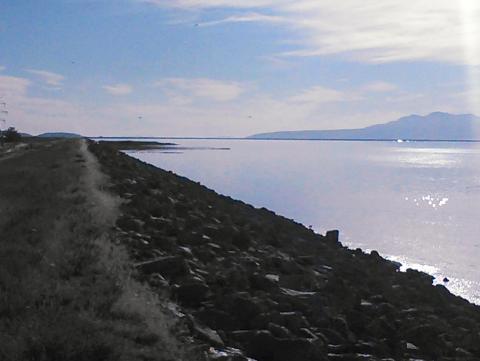
It’s no mystery that Utah is considered a desert, especially with the above normal temperatures of February and little precipitation that occurred that month. People may be wondering what this all means for Utah’s water year. Will there be enough water in the spring or summer? Is there a possibility of a drought? Looking at the facts may help alleviate some worries; but, needless to say, there’s a lot going on of which people need to be aware.
One source people can look at is the Utah Water Science Center website, which “provides scientific information to describe and understand water resources issues of interest to people of Utah and the nation.” Things that can be looked up include real time information about water-quality, streamflow, and ground-water data. For instance, on February 18, information found on there said that the Weber River near Plain City was at a below normal streamflow. Meanwhile, the Bear River near Corrine had a normal streamflow percentile. Another resource available for residents to look at is the Natural Resources Conservation Service Utah website. This site provides daily updates about the water year such as the snow water levels for rivers as well as precipitation averages for rivers.
Some good news from the state water report showed that over the holidays in 2014, “Holiday storms helped boost snowpack across the state — up to 109 percent of normal — on the first day of 2015.” One study showed that as of February 18th, Utah’s overall snowpack total was at 71 percent. While having a good snow runoff from the mountains will certainly help the situation, there are other factors that play in. This includes the underground water supply. From the Iron County Today website: “An average of 9,100 acre-feet of water is being removed each year in excess of what is replaced (an acre-foot of water is about 325,851 gallons). Additionally, groundwater levels have dropped in some areas of the valley by as much as 114 feet since 1939,” in the area of Cedar Valley.
Because of these concerns, many areas –including Box Elder and Weber Counties – have created what are called water conservatory districts to help make sure city and town leaders are taking responsibility when it comes to the water needs of their area. North Ogden Mayor Brent Taylor wrote about some concerns on his Facebook page about the water levels at Pineview that said: “Precipitation is currently 65% of normal, roughly the same as last year. This is not good news, but if you remember there were some major late-summer rainstorms in August last year. These provided a big boost to the water levels in Pineview Dam. So, although the precipitation is still well under average levels for this year, the outlook is... still tolerable, because of the water that was carried over from last season. If we get some additional late winter/early spring storms, we should be in pretty good shape. If we do not, we will be in tolerable shape as far as secondary water from Pineview. The start date for Pineview Water service to begin is April 15.” Willard Bay has also had a less than normal precipitation percentage, which is bad news for those who use it for both recreation and irrigation. Currently, some of the boat ramps there are closed due to having a less than 50 percent water level. Of course things can always change if Utah receives a lot of rain or snow in the next few months, but it’s important to keep in mind about conserving water and not overusing it during the summer. That way, residents can make sure they are doing their part to help make sure everyone has enough water to use.